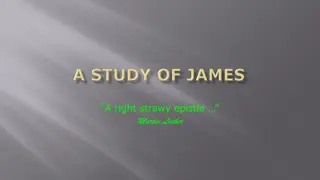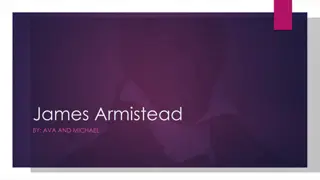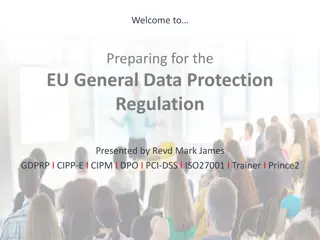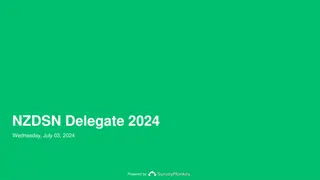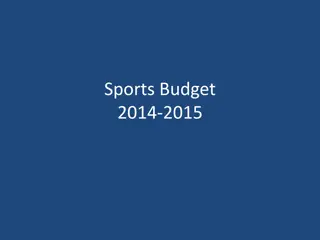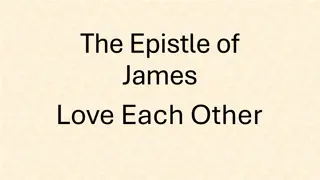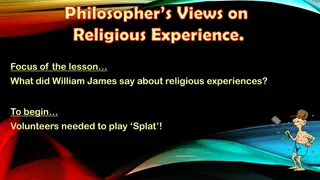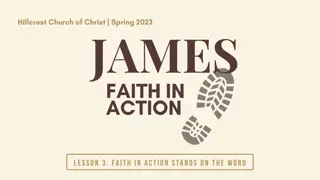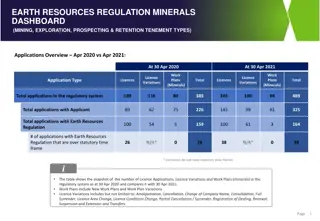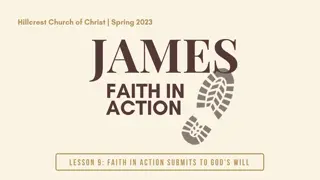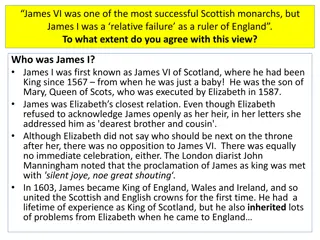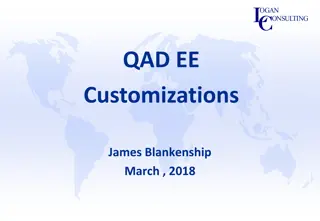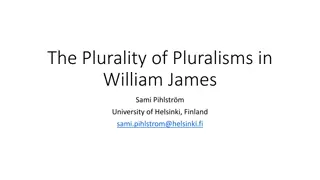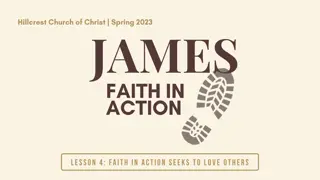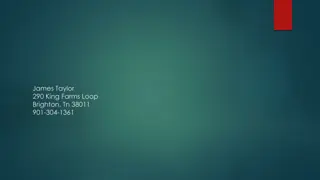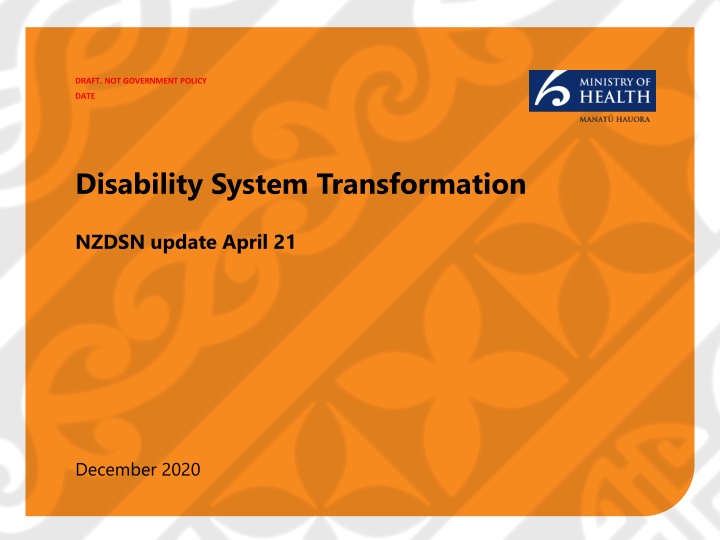
Disability System Transformation in New Zealand - Update and Future Directions
"Explore the ongoing Disability System Transformation in New Zealand, including key initiatives, principles, and lessons learned. Learn about the vision for greater choice and control for disabled individuals and their families, with a focus on self-determination and community building."
Download Presentation

Please find below an Image/Link to download the presentation.
The content on the website is provided AS IS for your information and personal use only. It may not be sold, licensed, or shared on other websites without obtaining consent from the author. If you encounter any issues during the download, it is possible that the publisher has removed the file from their server.
You are allowed to download the files provided on this website for personal or commercial use, subject to the condition that they are used lawfully. All files are the property of their respective owners.
The content on the website is provided AS IS for your information and personal use only. It may not be sold, licensed, or shared on other websites without obtaining consent from the author.
E N D
Presentation Transcript
DRAFT. NOT GOVERNMENT POLICY DATE Disability System Transformation NZDSN update April 21 December 2020
1 2 Provide a refresh of where we are at now The purpose of this presentation is: Set the context of disability system transformation in the wider system changes 3 Discuss the approach for the next phase of transformation.
The system transformation is grounded in Enabling Good Lives In the future, disabled children and adults and their families will have greater choice and control over their supports and lives, and make more use of natural and universally available supports. Self-determination Beginning early Person-centred Ordinary life outcomes Mainstream first Mana enhancing Easy to use Relationship building
Waikato An opt-in demonstration based on the EGL vision and principles Trials of the EGL approach show positive impacts on aspiration, education outcomes, and social participation. MidCentral A prototype of the transformed system called Mana Whaikaha, based on the EGL vision and principles. Christchurch A demonstration for all school leavers with high or very high needs between 2013 and 2016
We have learned the critical features of a transformed system Self-directed planning and facilitation Cross-government individualised and portable funding Considering the person in their wider context, not in the context of funded support services Strengthening families or wh nau Community building to develop natural supports.
What we are transforming Transform the stewardship and governance to drive better outcomes Transform the experience disabled people and whanau have with the disability support system Transform how disabled people and whanau direct the disability support system Transform how disability supports are provided
The wider DSS context There are ongoing cost pressures and pricing issues There are a number of emerging Policy challenges We need to improve our support for those with the most high and complex needs There are still large equity gaps for many disability support users Covid-19 hasn t gone away
1 System roles, responsibilities and governance, ensuring that system settings are consistent with and support the transformed system. 2 A new operating model, with person- directed models of support, easy access to information and guidance, access to independent allies and commissioning and contracting models based around achieving outcomes. We are planning for change at three levels. 3 Building the capacity and capability of disabled people and wh nau, so that they are able to engage in and lead the system, be valued as leaders in their own lives and have authority over their own lives.
1 Scope of the Health and Disability System review, both for disability support services and how disabled people experience the health system 2 There are key decision points in the coming months Budget 2021, to set the level of funding for both the continuation of the three pilot sites and the national implementation plan 3 Governance and structure decisions, the scope of institutional changes and the cost and timeline for any changes 4 Budget 2022, the investment case for the size and speed of a national implementation
Governance and Structure 1 Governance Goal: system level roles and responsibilities are established to drive better life outcomes for disabled people. Voice of disabled people Lead Agency Disabled people and whanau led governance Te Titiri framework Independent monitoring and assessment Critical features: disabled peoples leadership, alignment to NZ Disability Strategy and Human Rights obligations and guided by both a Te Tiriti Framework and EGL Principles. Budget, outcome and eligibility setting System policy settings System Stewardship and equity focus Key decisions: Retain within scope of HDSR or with MoH Wide population level scope or narrow disability support Operating Model 2 Operating Model Goal: Disability support system is contributing to better life outcomes and participating in their communities; disabled people have choice and control over their supports and authority over their own lives. Information and access Supports Good life planning Single source of truth for eligibility Easy to find and understand resources and information Simple points of entry into disability support system Access to independent ally/ Connector Person-directed support packages (incl personal budgets) and coordination Immediate resourcing for crisis support and safeguarding Outcomes based commissioning framework Flexible funding and contracting Equitable and sustainable pricing models Workforce capability building Critical features: person and whanau directed models of support, easy access to information and guidance, access to independent allies, commissioning and contracting models based around achieving outcomes. Key decisions: Level of investment to implement new models Degree of devolved commissioning and funding Disabled people and whanau capability 3 Disabled people and whanau capability Goal: all disabled people have the capability to engage and lead across the system, people are valued as leaders in their own lives and have authority over their own lives. Safeguarding Capability building Leadership networks All disabled people are supported to articulate and make their own decisions Tools for disabled people to articulate and set their good lives Tools for disabled people as employers and purchasers Leadership development . Local and national networks to grow leadership Communities of practice to advance cross-agency/sector initiatives Formal partnership models in place with agencies and providers Critical features: Safeguarding and supported decision making, leadership networks, partnership with the disability community and wider communities. Key decisions: Level of investment to grow leadership networks and capability Role of central government to drive community leadership High and Complex framework to best support most vulnerable people DRAFT - NOT GOVERNMENT POLICY
Timeline view of high level implementation plan Phase 1 Phase 2 Phase 0 Budget process for Phase 2 Cabinet Paper with recommendations on Governance Options and high level implementation plan Leg changes and Policy development for establishment of new entity and governance structures Recruitment of key roles and appointment process for governance roles Governance Detailed development of preferred options incl. any legislative changes, capability needs, infrastructure, operating reqs, Alignment to operating model and wider H& D system changes Infrastructure, planning incl. hosting agreements, IT and reporting lines, resource and recruitment planning, Budget approval Budget process for Phase 1 funding Detailed development of disabled peoples governance models incl establishing mandates, reporting relationships and monitoring criteria. Detailed requirement design and sector engagement for procurement of new/re- scoped delivery agencies to replace current NASC specifications and capability Procurement process and establishment of new delivery agencies including any transition support, training and development and infrastructure set up Detailed design of requirements for new operating model including: Information provision, Independent Ally function, person-directed planning and allocation. Implementation Plan and investment case for future phases Operating Workforce development and practice framework for Independent ally Re-tender or re-set of existing contracting and pricing models to align to new commissioning framework. Detailed Commissioning Framework to enable outcomes based funding and flexible contracting Establish regional leadership networks with terms of reference, funding and appointment processes Implementation of commissioning model Implementation Plan and investment case for future phases Capability Policy and operational setting for safeguarding and supported decision making National scaling and implementation of new capability building tools and resources Cross Agency Work Programmes to develop disability related policies and initiatives with the community Leadership capability tools and resource development DRAFT - NOT GOVERNMENT POLICY June 2024 July 2021 June 2022 March 2021
SYSTEM TRANSFORMATION / SCALING EGL WORK PROGRAMME OVERVIEW JAN JUN 2021 SYSTEM TRANSFORMATION / SCALING EGL WORK PROGRAMME OVERVIEW JAN JUN 2021 June July May June March April January February February March April May Implementation Planning - Detailed plan for phase 1 implementation including workstreams planning - Programme structure and governance - A roadmap for phase 2 showing key outcomes and deliverables, timelines and indicative costs - Budget bid process Te Tiriti and partnership frameworks - Te Tiriti Framework for system transformation work programme - Partnership framework -system transformation work programme Change, engagement and communication - Change road map for scaling EGL and system transformation - Rights holder and Stakeholder mapping/analysis, engagement and communication plan - Refresh of EGL website -Storytelling Project Capacity, Capability and Leadership - Develop national plan to build national authority and community networks for disabled people & wh nau -Workforce capability o EGL practice framework ecosystem-initial scoping and design work for independent facilitation function o NASC workforce development * o Provider workforce development ** - Review of current leadership, governance and management structures/voice mechanism EGL sites moving from pilot to BAU - EGL sites change , development and growth planning Evaluation, Data, Knowledge and Monitoring - System transformation evaluation framework/ strategy /plan - Mana Whaikaha-repeat baseline outcomes evaluation- show this extends past June - Initial design work - performance framework with robust measures - Whole of system evaluation and monitoring plan- embedding the voice of disabled people - EGL Waikato Phase 4 Evaluation NB this is led by EGL Waikato ) Design for the future - Mana Whaikaha transition - Initial design of requirements for new operating model - Initial work to strengthen cross agency engagement Connected /aligned projects and initiatives - Building the Framework and tools for commissioning EGL outcomes - NASC/MOH work programme * - Flexible disability supports - Disability workforce RFP **

